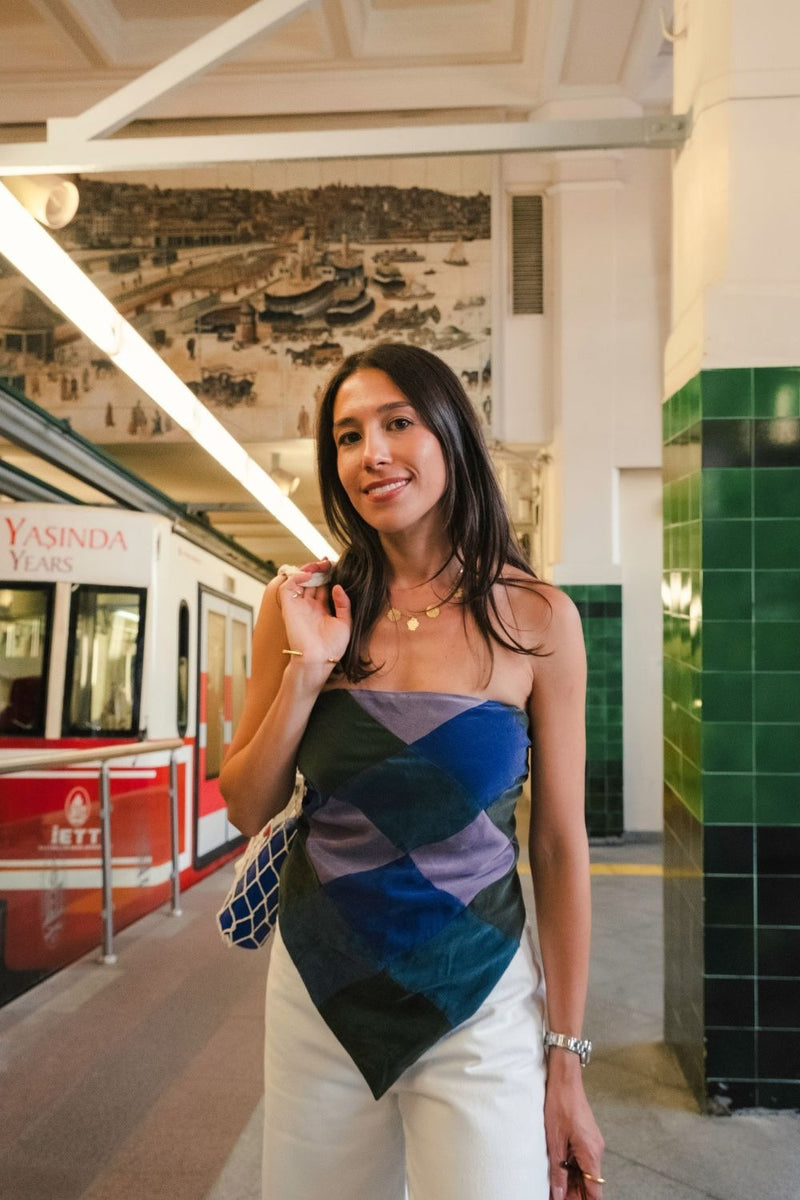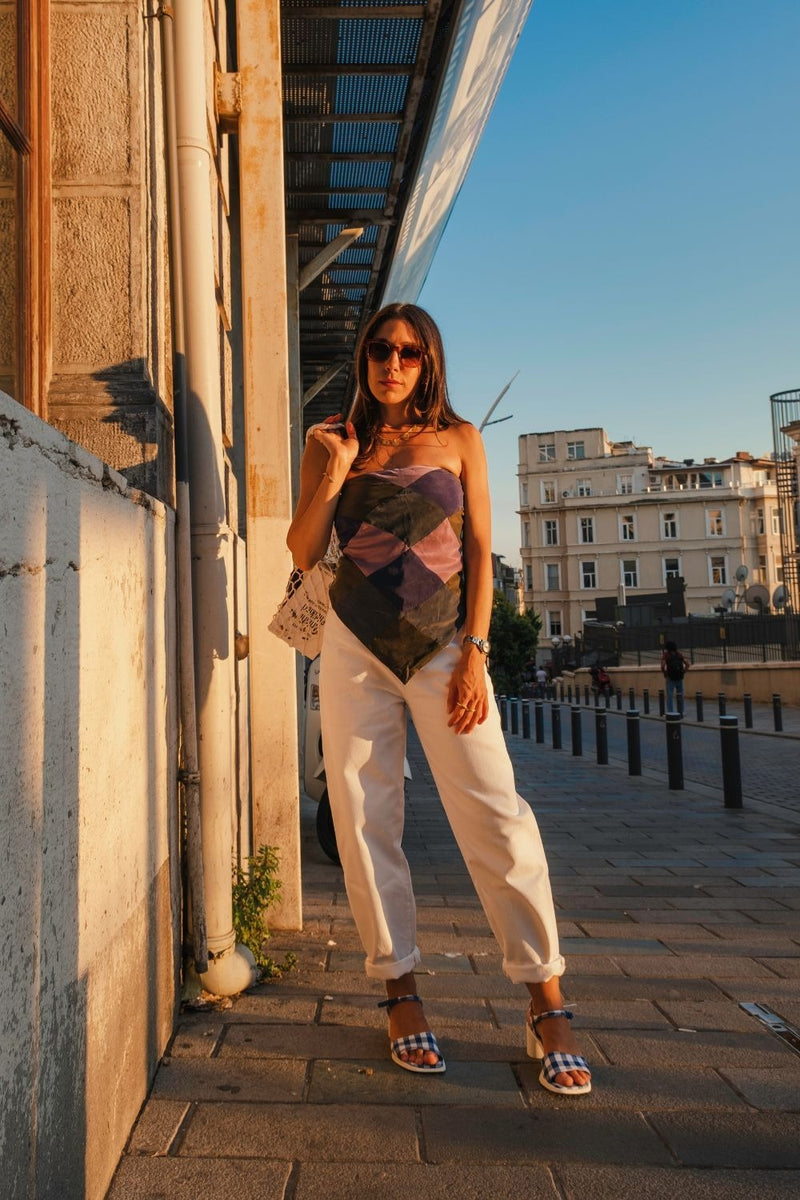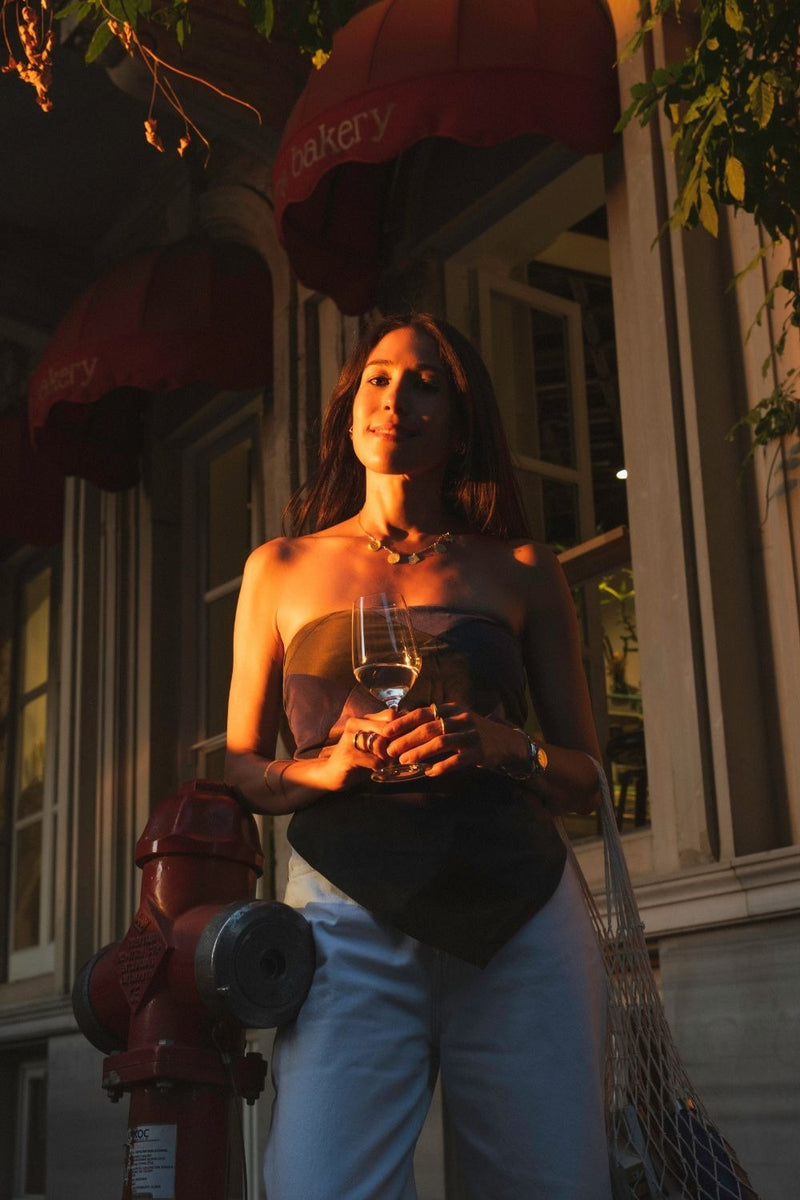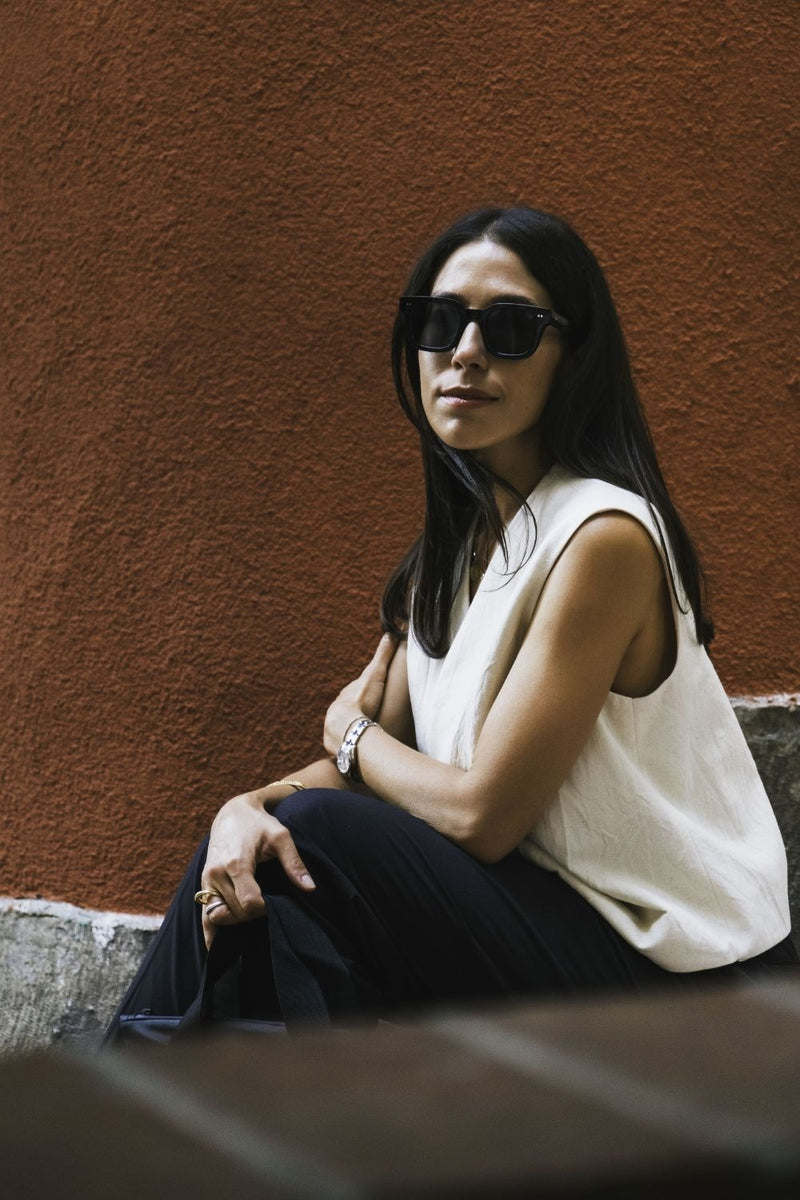Good People of vitruta: Anlam Arslanoğlu de Coster
Meet the newest member of good people of vitruta, Anlam Arslanoğlu de Coster. We met Anlam back in April at a dinner hosted by vitruta and Soli at Aheste. We had the chance to meet again and chat, and we crowned our friendship, which started in Pera, with a photoshoot there and a delightful interview that followed. We hope you enjoy it as much as we did!


Welcome to good people of vitruta, Anlam! Our first question is always the same: Who is Anlam Arslanoğlu de Coster? How did your journey begin, how’s it going, and what do you do?
Thank you! I’m honored to be here. I’m not sure if I can answer this without spiraling into an existential crisis—I'm still uncertain about which surname to use or how to describe my profession, but I’ll give it a try. :) Anlam Arslanoğlu de Coster is a 38-year-old art consultant. For the past 15 years, I’ve worked with various art and design institutions across Paris, London, and Istanbul, with one foot firmly planted at Yay. I’m a Capricorn woman, often dubbed the Swiss Army knife of the art world. I have a three-year-old daughter named Ida and a deep passion for the civilizations of the Ancient Mediterranean and Near East, as well as jewelry.
During the last five years in London, I led the art fairs and partnerships of the world’s most significant online art platform, Artsy. I also worked at Reiber PR, specializing in art and design, where I managed global communications campaigns for museums, fairs, auctions, and galleries. I’ve served as a consultant for the NOMAD and FIAC fairs, curated Ballon Rouge’s first Paris exhibition, and written extensively. I now live in Galata and am currently working on an exciting auction with Christie’s in London for İKSV’s 50th anniversary, along with two projects in Paris.



So how did you get into the arts? When did you realize it was the right path for you?
Looking back, thanks to you, I realize I’ve been interested in different branches of art and archaeology since childhood, but it was my French teachers in middle school who suggested I could make a career out of it. A group of idealistic young teachers had come together at Ankara’s Tevfik Fikret High School, where they introduced us to philosophy, cinema, literature, art, and music. One funny memory: I won the best actor award in the French Theater Club for a Beckett play and helped the school start an international theater festival. I always knew I had to do something with art. Despite this, I ended up studying economics in college, bowing to social pressures. It took an Erasmus exchange at the Sorbonne to convince myself and my family that my destiny was in the arts. After a life-changing internship with İKSV, I completed my master’s in arts management at Sciences Po Paris. Since then, I can say I’ve dedicated my life to my work.
Could you tell us about five museums that have left the biggest impression on you as someone deeply immersed in the global art world?
Museums are where I feel happiest and most at home, so it’s hard to choose, but if I go with my emotional ties, first would be the Musée Nissim de Camondo in Paris, which is part of the Musée des Arts Décoratifs where I once worked. There are many books about the Camondo family and the museum, but for those interested, I’d recommend Letters to Camondo by Edmund De Waal.
Second would be the Centre Pompidou, where I completed my first major project during my student years and shared unforgettable moments backstage with students from art schools across Europe. Later, I worked with the Centre Pompidou on the Sarkis exhibition as part of the France-Turkey Season, and it truly became the school that taught me modern and contemporary art, as well as experimental music.
Third is Rome, which feels like an open-air museum in itself. Three museums especially close to my heart there are the Etruscan Museum, the Galleria Nazionale d'Arte Moderna e Contemporanea, and Villa Borghese.
The list could go on, but the Louisiana Museum in Copenhagen, the Cycladic Art Museum in Athens, and the Kunstmuseum in Basel are where I find the most peace. Recently, I was most impressed by the scenography at the Louvre Abu Dhabi, which breaks traditional geographic narratives to create a new, universal art history centered around objects.
For an Istanbul art enthusiast this fall, especially in a Biennale year, what would you recommend?
September will be exciting in Istanbul! The international art community is gathering again in our city for the Istanbul Biennial after a long hiatus. I’d recommend not missing the exhibitions curated by Selen Ansen at Meşher and the Abdülmecid Efendi Pavilion. I’m also looking forward to Özlem Altın at The Pill and Renée Levi at Öktem Aykut. Plus, I’m really curious about Taner Ceylan’s exhibition at Mehmet Emin Ağa Yalısı.


A question that’s perfect for me—I’m known for such playful questions :)—if vitruta were a person, which artists would it admire and follow closely?
If vitruta were a person, I think it would admire artists who appeal both to the mind and the eye, who are innovative yet have a solid, consistent stance. When I close my eyes, the first names that come to mind are Hayal Pozantı, Marion Verboom, Louisa Gagliardi, Ellen Pil, and Claire Trotignon.
And lastly, with a nod to Soli, who brought us together, can you share your thoughts on Pera and art? It seems that no matter what, art never leaves Beyoğlu.
Historically, Pera has always been the heart of Istanbul’s art and nightlife. Pera has long embraced the city’s eccentric characters and visitors from distant places. Although the traditional art crowd may visit Beyoğlu less frequently these days, many of the city’s most significant art institutions and galleries are still located in and around Beyoğlu, and they keep this tradition alive despite everything. Dirimart recently announced it will open a new gallery on Meşrutiyet Avenue. New bookstores are opening. I hope the buildings restored and repurposed by İBB Heritage will continue to support this momentum, and Pera will remain the vibrant center of art.
Finally, let’s wrap up by asking about your favorite brands at vitruta. :)
Discovering independent brands at vitruta is such a joy. For instance, the Sunday Game candle from Flame Game, which I discovered through you, was a lovely surprise. Among Istanbul-based brands, I can’t do without Lar Studio and A Hidden Bee, both founded by creatives I admire. As for vitruta’s standout international brands—I’m a hopeless Rains addict; their bags are lifesavers. And I’m eagerly awaiting my fall sneakers—Converse, Vans, and Veja—all from vitruta.